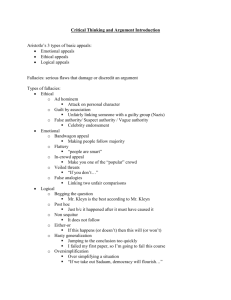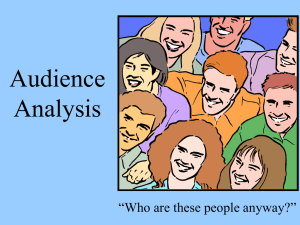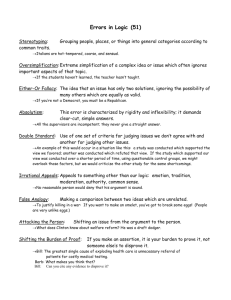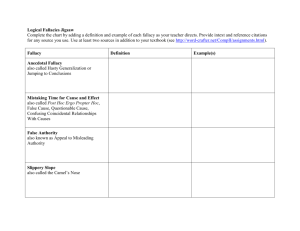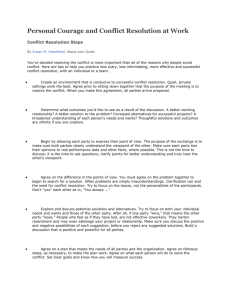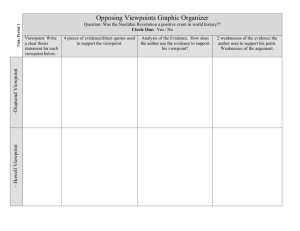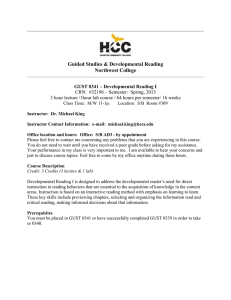Example
advertisement
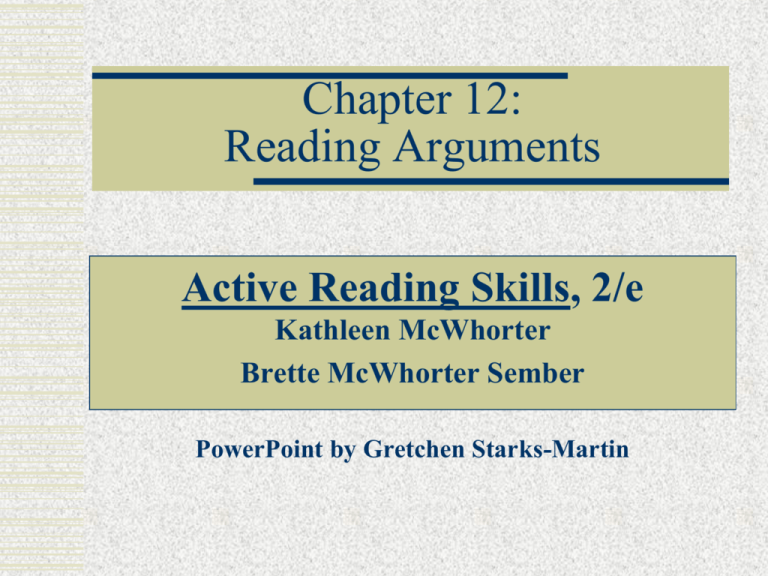
Chapter 12: Reading Arguments Active Reading Skills, 2/e Kathleen McWhorter Brette McWhorter Sember PowerPoint by Gretchen Starks-Martin What is an Argument? An argument always presents logical reasons and evidence to support a viewpoint. Parts of an Argument The Issue – the problem or controversy The Claim – the position on an issue The Support – reasons and evidence The Refutation (sometimes) Support through Evidence Evidence consists of Facts Personal experience Examples Statistics Comparisons and analogies that demonstrate why the claim is valid. Questions for Evaluating Arguments Is the Evidence Relevant? Does it apply specifically to the issue at hand? Is the Evidence Sufficient? Is there enough detail? Does the Author Recognize and Refute Opposing Viewpoints? Does the Author Use Emotional Appeals and Are They Used Unfairly? Emotional Appeals 1. Emotionally Charged or Biased Language. Example: an ad for an automobile that used phrases such as “animal sleekness.” 2. False Authority. Example: athletes endorsing athletic shoes. 3. Association. Example: an ad for a product with a speaker standing in front of the American flag. Emotional Appeals 4. Appeal to “Common Folk.” Example: You sell a product by indicating that it is used in the average household. 5. Ad hominem. (Attacks the holder of the viewpoint, not the viewpoint itself.) Example: How could someone who does not have a college degree criticize a judicial decision? 6. “Join the Crowd” Appeal. Example: Everyone else is buying it; so you should too. Errors in Logical Reasoning Circular Reasoning Hasty Generalization Non Sequitur (“It Does Not Follow”) False Cause Either-Or Fallacy Circular Reasoning Also known as begging the question, this error involves using part of the conclusion as evidence to support it. Example: Female police officers should not be sent to crime scenes because apprehending criminals is a man’s job. Hasty Generalization The conclusion is derived from insufficient evidence. Example: By observing one performance of a musical group, you conclude the group is unfit to perform. Non Sequitur (It Does Not Follow”) False establishment of cause-effect. Example: “Because my doctor is young, I am sure he will be a good doctor.” False Cause The incorrect assumption that two events that follow each other in time are causally related. Example: You opened an umbrella and tripped on the sidewalk. If you said you tripped because of the umbrella, it would be false cause. Either-Or Fallacy This assumes that an issue is only two sided, or that there are only two choices or alternatives for a particular situation. Example: Violence on TV must be either allowed or banned. (Does not recognize alternatives.) Arguments in Academic Writing Textbook authors often take a position on pertinent topics within their discipline. Example: A psychology textbook author may argue that compulsive shopping should be officially declared a mental illness. Evaluating Your Progress Use the “Critical Thinking-American Southwest” module in the Reading Skills section on the MyReadingLab Web site at http://www.ablongman.com/myreadinglab. For more practice visit the Companion Web site. http://www.ablongman.com/mcwhorter
